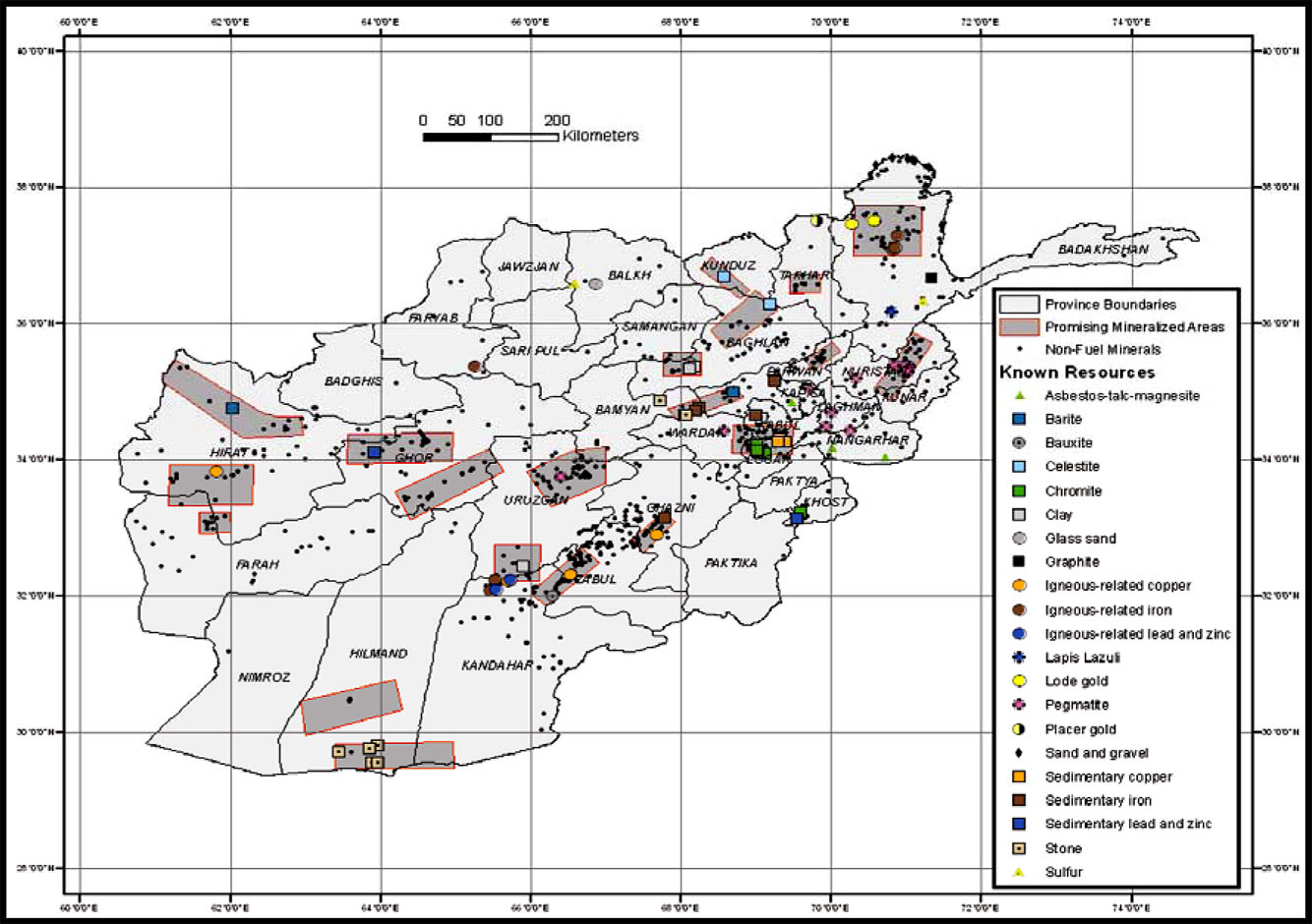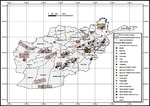
 NYT's James Risen's second piece on the "miracle" find. As the map (quickly Googled) above and left [click to enlarge] demonstrates, the notion of Afghanistan's mineral deposits not exactly a bolt from the blue. Lack of security held up serious exploration in the past, and mining co's say the same is true today--go figure.
NYT's James Risen's second piece on the "miracle" find. As the map (quickly Googled) above and left [click to enlarge] demonstrates, the notion of Afghanistan's mineral deposits not exactly a bolt from the blue. Lack of security held up serious exploration in the past, and mining co's say the same is true today--go figure.
Given the high-risk, frontier environment, the most risk-tolerant explore first:
A few high-risk investors are sufficiently intrigued by the country’s potential to take an early look. JP Morgan, for instance, has just sent a team of mining experts to Afghanistan to examine possible projects to develop.
“Afghanistan could be one of the leading producers of copper, gold, lithium and iron ore in the world,” said Ian Hannam, a London-based banker and mining expert with JP Morgan. “I believe this has the potential to be transforming for Afghanistan.”
But as for main-line efforts . . .
But executives with international mining firms said in interviews that while they believed that Afghanistan’s mineral deposits held great potential, their businesses were not planning to move into the country until the war was over and the country more stable.
“There are huge deposits there,” said David Beatty, chief executive of Rio-Novo Gold, a mining company based in Toronto. “But as chief executive, would I send a team to Kandahar? And then call a guy's wife after he gets shot? No."
After all the hype triggered by his original piece, which was obviously spoon-fed by the Administration's team for maximum effect, this Risen piece seems decidedly designed to reduce expectations and present a more realistic appraisal. I do like the goofily Biblical "covet" in the headline, though.
It has long been known that Afghanistan had significant deposits of gemstones, copper and other minerals, but United States officials say they have discovered and documented major, previously unknown deposits, including copper, iron, gold and industrial metals like lithium.
A Pentagon team, working with geologists and other experts, has shared its data with the Afghan government, and is working with the Afghan Ministry of Mines to prepare information for potential investors in hopes of placing some mineral exploration rights up for auction within the next six months. On Thursday, Afghan officials said they believed that the American estimates of the value of the mineral deposits — nearly $1 trillion — were too conservative, and that they could be worth as much as $3 trillion . . .
At a news conference in Kabul, Wahidullah Shahrani, the mines minister, pledged to make the bidding and contracting of mining rights as transparent as possible to reduce the possibility of corruption. He said the ministry would post contracts on its Web site.
Mr. Shahrani and his advisers cautioned against overly high expectations, underscoring that development would take years and that there were many obstacles to overcome, not least of all the lack of security in some of the areas with the most minerals and the lack of a transportation infrastructure.
International mining officials and independent experts echoed that view. Jim Yeager, a Colorado-based geologist and former consultant to the Afghan mines ministry, said that poorly written mining regulations could also hamper future development.
Remember that NorKo has about $6T in minerals--for comparison's sake.